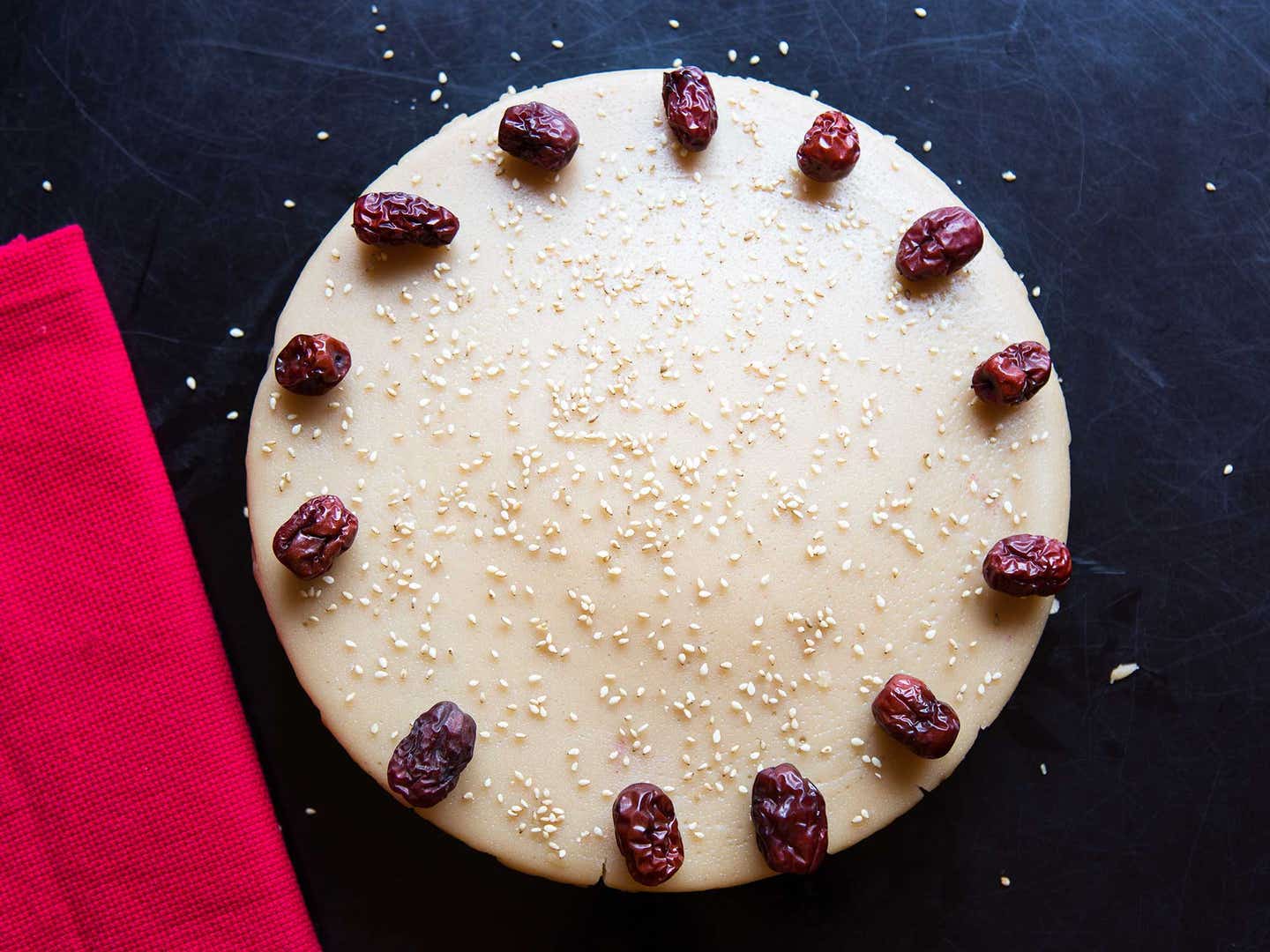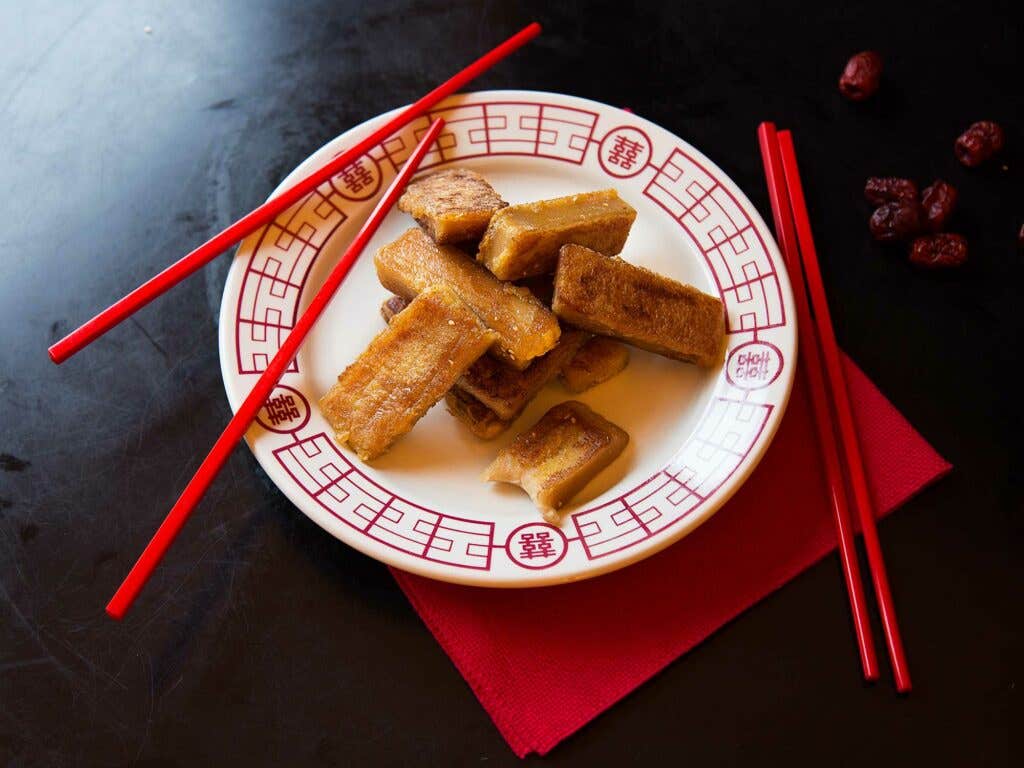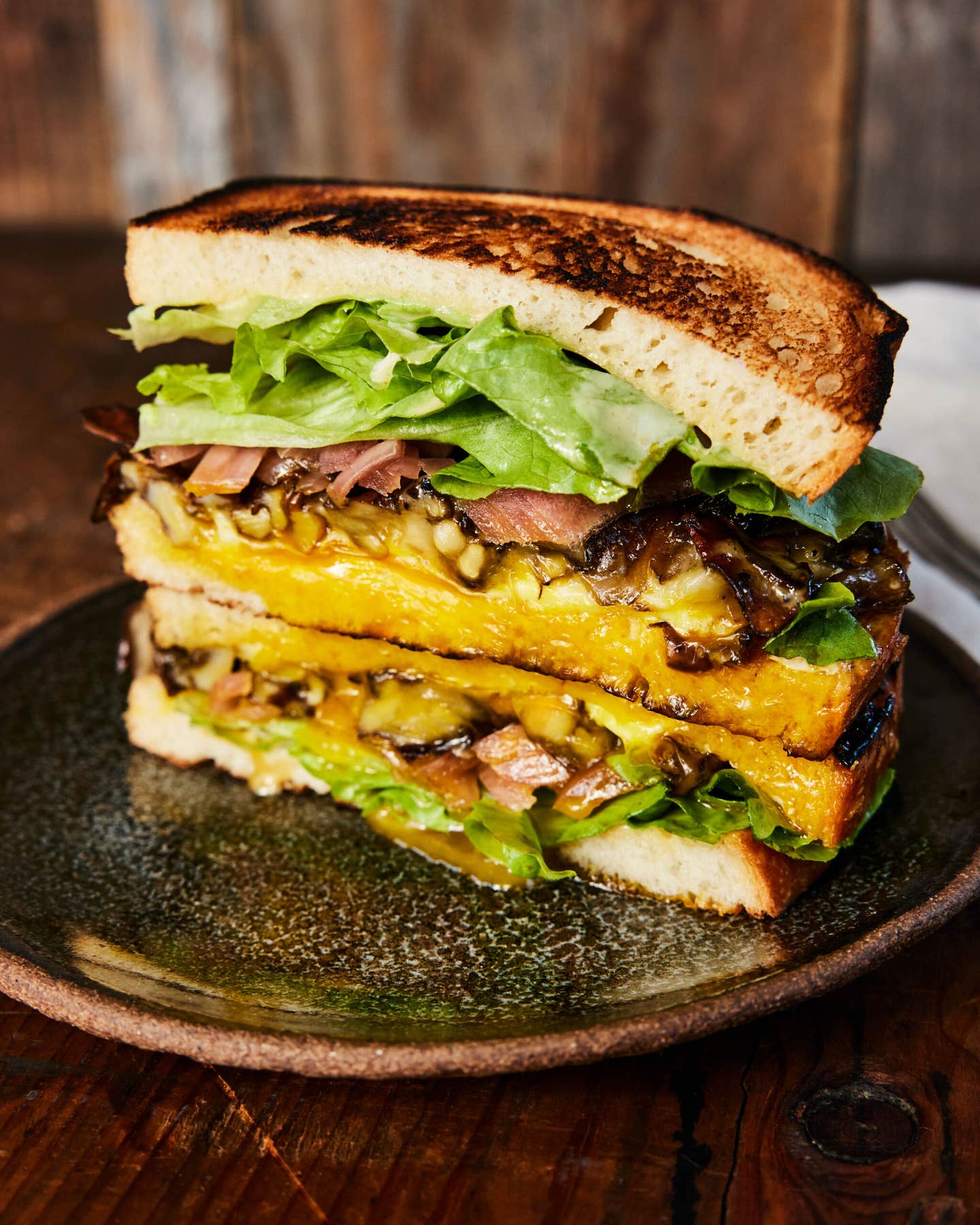
Every year when I was a child in Connecticut, I was ushered, with other reluctant Chinese children, into a brick building where we would sing songs, recite skits, eat tepid dumplings, and be rewarded with one-dollar bills in red envelopes. This was the extent of my Chinese New Year celebration, for my family did not celebrate at home, and to be honest, I was fine with that. After all, I was born in the U.S. and lived in the suburbs, and during the 1980s, there was little joy for me to take in being Chinese. My classmates believed that I ate worms, and I wished that I was blonde and went to church.
However, around February, one item would appear in our refrigerator without ceremony for which I was thankful. Eaten for the new year the way fruitcake is baked for Christmas, nian gao, in the most pragmatic terms, is a steamed cake made of sticky rice and brown sugar. My father would buy one every year from Chinatown, but in my childhood memory, its arrival was always mysterious, a treat in a tin pie plate decorated with red Chinese jujubes and a sprinkle of sesame seeds. Despite the paucity of ingredients, a nian gao evokes so many wonderful things: almonds, dates, and vanilla; caramel, toffee, and cream. You eat it hot, when it is at its chewy best, and its texture marvelous: tacky and soft, with brown sugary strings that pull from your mouth when you take a bite.
The nian (年) in nian gao means "year," but there is also a nian (粘) in Chinese that means sticky. Growing up, the most Chinese thing about me was that I loved everything that was nian (sticky) and made from nuo-mi (sticky rice). To pronounce the words, you press your tongue to the roof of your mouth, then slowly unroll it, just like eating sticky nian gao, Japanese mochi, or Korean tteok. But as all the non-Asians I knew growing up didn't like anything sticky, and so I kept this particular passion locked up.
Nian gao felt exotic to me in a way that most Chinese food available to us—greasy and unsubtle—was not. It sang of a different world. When I was a child reading the Chronicles of Narnia, I believed that Turkish delight must taste a lot like nian gao; something so delicious that it drove one of the main characters betray his family. The Turkish delight scene, as I like to call it, resounded with me for another reason. It was set in a Narnia with winter but no Christmas; my Chinese New Year was set in winter without holiday cheer. (When I eventually tried real Turkish Delight for the first time years later, I was so disappointed.)

My father was perhaps most embarrassingly Chinese figure in my life; he was also source of all my nian. Once he also packed some strips of nian gao in my lunchbox; I opened it at school, my classmates sniggered, and I asked him to never do it again. But in the privacy of our home, I let him make me fermented sticky rice soup, slightly boozy and my idea of ambrosia. And to indulge my cravings for nian year-round, when nian gao wasn't available, he heated packaged mochi for me in the microwave, or we'd stay up late to make sweet rice dumplings stuffed with red bean paste.
You cannot eat nian gao cold; the sugar and rice harden enough to break your teeth. So my father would cut leftover chilled cake into thin slices, dip them in beaten egg, and fry them in a skillet for breakfast or a snack. The outside turns crisp like the surface of a well-browned French toast, and the middle becomes molten again, to blister your lips if you're not careful.
I stopped eating nian foods when I left for college because there was no one to prepare them properly, and more importantly, no one with whom I could enjoy them. It was only after my father passed away that I found myself in a shop on Canal Street in New York's Chinatown, staring at a nian gao in its pie tin, dotted with Chinese dates. I circled around it as one does a friend with whom one has lost touch.
It feels easier now to not only observe Chinese New Year, but also, by extension, to feel more comfortable being Chinese. I still don't make my own nian gao, but the non-Asians I know are eager to learn about the traditions that I was once so anxious to discard. They are also, somehow, fans of all things nian, and I once again have people to share pieces of nian gao whenever I find it.
Though to be honest, Chinese New Year still often passes me by these days. Too frequently, it is April before I realize that my nian gao window has closed. But when I do remember in that first or second week of February, I will slice and fry nian gao and serve it to my friends and commemorate the new year, the memory of my father, and the complicated stickiness that is the stuff of life.
Get the recipe for Nian Gao »
Keep Reading
Continue to Next Story










